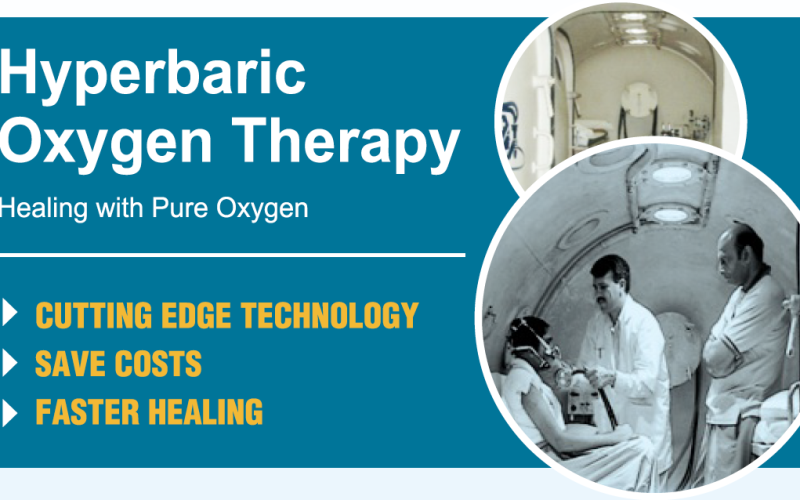Introduction
Brain health matters for everyone—from young students to older adults. Two treatments gaining attention are hyperbaric oxygen therapy (HBOT) and neurofeedback. HBOT uses pure oxygen under pressure to help healing. Neurofeedback trains your brain using simple signals from sensors on your head. Both methods aim to improve memory, focus, and mood. When used together, they may offer even stronger benefits. In this article, we’ll explore how hyperbaric oxygen therapy and neurofeedback work, who can benefit, and what science says about combining these two powerful tools for better brain health.
What Is Hyperbaric Oxygen Therapy?
Hyperbaric oxygen therapy takes place in a special chamber. You breathe 100% pure oxygen at higher-than-normal air pressure. This increases oxygen in your blood and body tissues. Extra oxygen helps injured cells repair faster and reduces swelling. Doctors have used HBOT for decades to treat wounds, infections, and decompression sickness in divers. Recently, researchers have studied its effects on the brain. Studies show HBOT may help people recover from strokes, traumatic brain injuries, and even chronic fatigue by boosting blood flow to the brain.
How Does Neurofeedback Work?
Neurofeedback, also called EEG biofeedback, uses a simple cap with sensors. These sensors measure electrical activity in your brain. A computer screen shows your brain waves in real time as graphs, games, or animations. By watching these patterns, you learn to change your brain activity. Trainers guide you to calm areas that fire too fast or speed up slow areas. Regular sessions help the brain form new healthy patterns. Neurofeedback has shown promise for attention issues, anxiety, sleep problems, and mild depression by teaching your brain to self-regulate.
Shared Goals: Healing and Performance
Both HBOT and neurofeedback share key goals:
- Increase brain function: More oxygen and better wave patterns help neurons work well.
- Improve focus and attention: Clearer thinking makes learning and work easier.
- Boost mood: Healthy brain activity can ease anxiety and depression symptoms.
- Support recovery: After injury, these therapies can speed healing and reduce long-term effects.
By targeting the brain in different ways—one through biology (oxygen) and one through behavior (wave patterns)—these treatments provide a well-rounded approach to brain health.
Benefits of Hyperbaric Oxygen for the Brain
- Enhanced Blood Flow: Higher oxygen levels help blood vessels expand, carrying more nutrients to brain cells.
- Cell Repair: Oxygen supports new cell growth and repair in damaged brain tissue.
- Reduced Swelling: HBOT can lower inflammation after injury or surgery.
- Stem Cell Release: Research suggests HBOT may trigger the release of stem cells that aid healing.
- Long-Term Gains: Some studies report memory and attention improvements lasting months after treatment.
These benefits make HBOT a valuable tool for those recovering from brain trauma or seeking cognitive boosts.
Benefits of Neurofeedback for the Brain
- Self-Regulation: You learn to control your own brain waves for better calmness and alertness.
- Non-Invasive: No drugs or surgery—just simple sensors and feedback on a screen.
- Long-Lasting Effects: After enough sessions, your brain retains healthier patterns on its own.
- Versatile Uses: From ADHD to insomnia, neurofeedback has shown positive results in many areas.
- Safe and Gentle: Side effects are rare and usually mild, like temporary fatigue.
Neurofeedback empowers you to shape your own brain activity, leading to more balanced mental states.
Combining HBOT and Neurofeedback
Using both treatments together may offer stronger results. Here’s why they work well as partners:
- Synergy: HBOT repairs and primes brain tissue, making neurofeedback training more effective.
- Faster Progress: Enhanced oxygen levels can speed up the learning of new wave patterns.
- Broader Reach: While neurofeedback fine-tunes activity, HBOT supports overall cell health.
- Holistic Care: This duo addresses both the structure and function of the brain.
Some clinics now offer combined programs, scheduling HBOT sessions followed by neurofeedback within the same week.
Who Can Benefit?
These approaches suit a wide range of people:
- Stroke Survivors: To recover speech and movement faster.
- Concussion Patients: For quicker relief of headaches and dizziness.
- Students and Professionals: To boost focus, memory, and exam performance.
- Older Adults: For support against age-related memory loss.
- People with Anxiety or ADHD: To calm racing thoughts and improve attention.
Anyone curious about enhancing mental clarity or recovering from brain issues can ask their doctor if these therapies might help.
What Science Says
Research on each therapy has grown in recent years:
- A 2019 study found stroke patients receiving HBOT had significant memory gains compared to control groups.
- Clinical trials of neurofeedback report up to 60% reduction in ADHD symptoms after 20–40 sessions.
- Early research on combined approaches suggests patients feel clearer thinking and less fatigue sooner, though larger trials are needed.
While promising, scientists stress the importance of professional supervision. Both treatments require trained staff, proper dosing (for HBOT), and careful brain wave analysis (for neurofeedback) to ensure safety and results.
Safety and Considerations
Before starting HBOT or neurofeedback, keep these tips in mind:
- Consult a Doctor: Make sure you have no lung issues or ear problems that pressure changes could worsen.
- Certified Providers: Choose clinics accredited by reputable organizations for both HBOT and neurofeedback.
- Monitor Progress: Track your mood, sleep, and focus throughout treatment.
- Be Patient: Improvements often build over weeks, so stick with the program.
- Cost and Access: Insurance may cover parts of treatment; check policies and look for clinics offering packages.
By following guidelines, you minimize risks and maximize gains in brain health.
Future Directions
New studies are exploring:
- AI-Enhanced Neurofeedback: Smarter software that adapts training in real time.
- Home HBOT Units: Portable chambers for mild sessions at home under remote supervision.
- Personalized Protocols: Combining genetic and brain scan data to tailor treatment plans.
- Virtual Reality: Merging VR games with neurofeedback for engaging brain training.
As technology advances, the synergy between hyperbaric oxygen and neurofeedback will only grow stronger, offering more precise and accessible brain health care.
Conclusion
Hyperbaric oxygen therapy and neurofeedback stand out as two cutting-edge methods to support and restore brain health. HBOT floods damaged tissue with healing oxygen, while neurofeedback teaches your mind to regulate its own activity. When combined, they offer a holistic path to clearer thinking, better focus, and faster recovery from injury. Though research continues, many patients already report lasting gains in memory, mood, and attention. If you’re seeking innovative ways to boost your brain’s performance or aid recovery, consider discussing these therapies with a qualified provider. Embrace the power of oxygen and feedback to guide your brain toward its highest potential.












